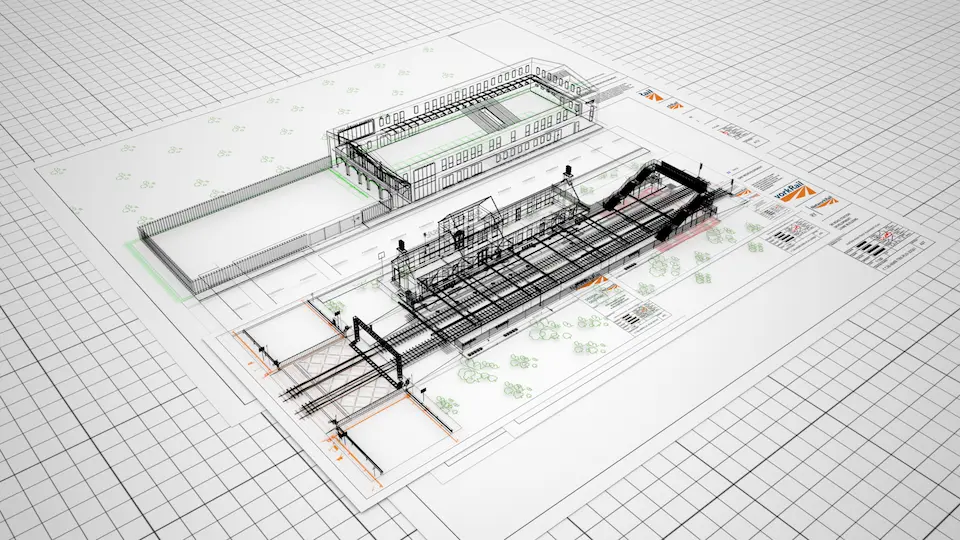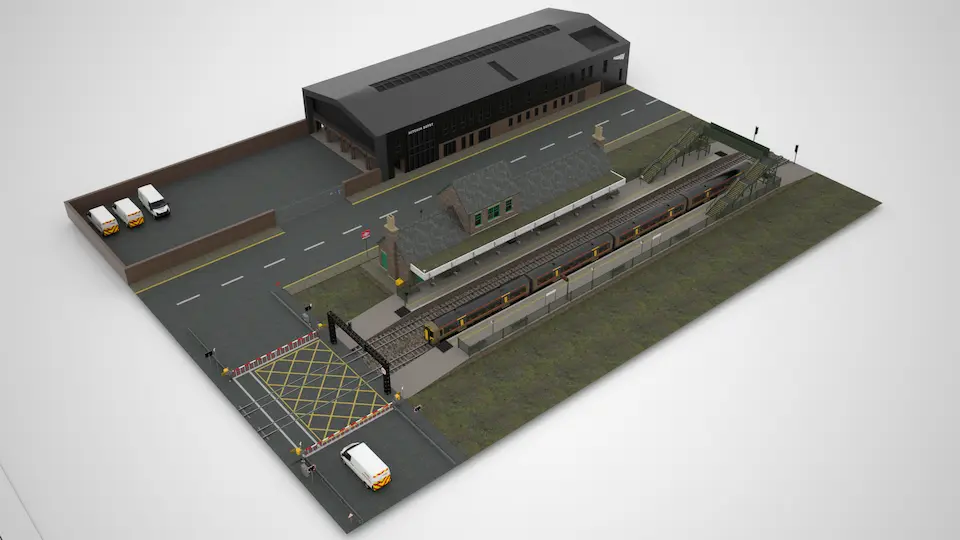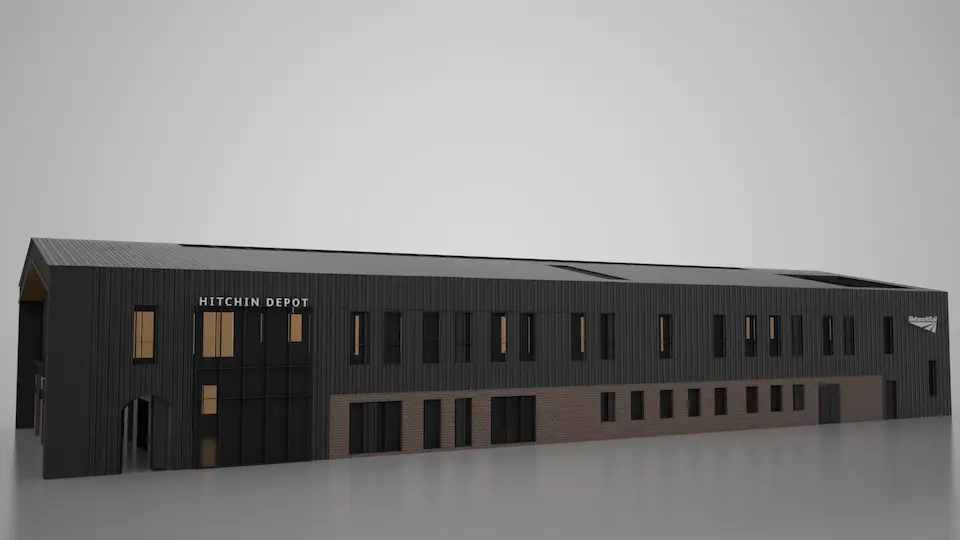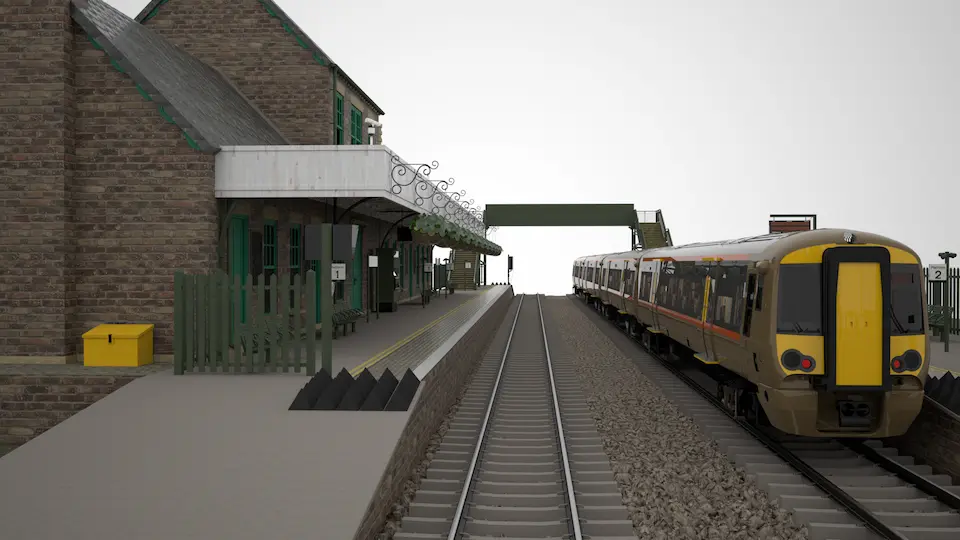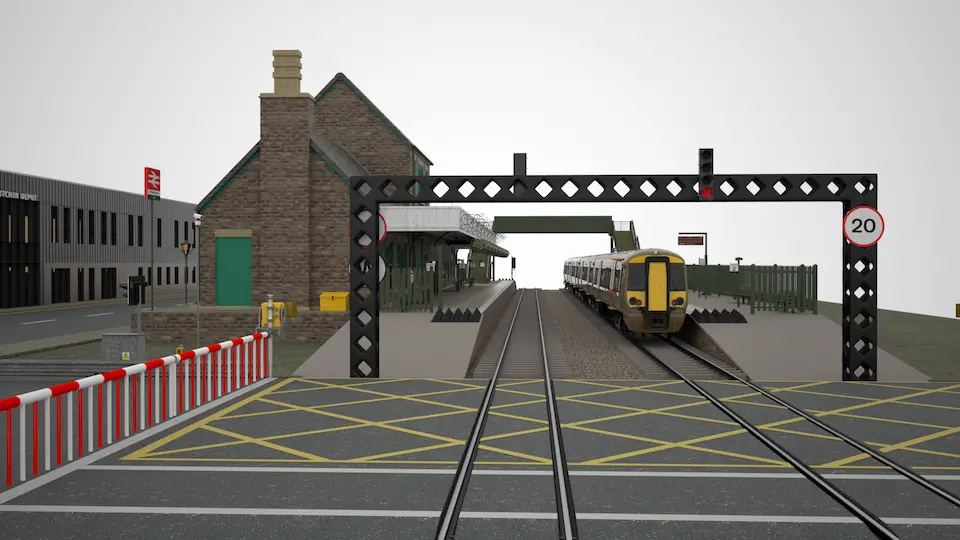Digital Enablement Programme
I was briefed to make a short film explaining the concept surrounding Network Rail's Digital Enablement programme. The programme champions the linkage of construction data in a digital environment. I was asked to portray construction drawings for numerous disciplines in their legacy format and how they are independent from each other. Gradually, this information would mature into an intelligent 3D model where data, information, and drawings fuse together. I created a 3D railway diorama to achieve this.
To assist, I was provided a 3D Revit export of the footbridge and Depot building. However, these were both detailed construction models unsuitable for creating a detailed and complex animation. The Depot Building was originally 42 gigabytes in its native format. I had to remodel both using 2D elevations and plans. The GLB model of the building shown on this page is now reduced to 10.4 megabytes with basic textures.

I divided this model into several sections in order to be able to colour each segment representing a specific discipline. I then rendered each from a bird's-eye perspective as contours in order to create the mock CAD drawings that roll out and overlay each other. This would be challenging to align, so a lot of care and thought was given when setting up the scene.
The film was made for an Autodesk summit and is later to be shown across the wider organisation. I produced this in 160 hours (or 4 weeks based on a 40 hour week), over 2 weeks ahead of the summit. This included regular end client meetings and updates, 3D modelling, dynamics simulation, 2D and 3D animation, reproduction of 2D graphics as vectors, texturing, texture creation, camera alignment, lighting, compositing, audio editing, numerous render passes, snagging, revisions, and finally, upload and delivery.
If I had a more lenient timeframe for creating this content, I would have opted for a paper texture instead of pure white (#FFFFFF) to achieve a more realistic look for the drawings and grid backdrop. However, I did need to take into account the potential for visual noise, especially considering the fast-paced animations and the large screen format on which it would be displayed. Could this approach have been successful? Additionally, I would have invested additional time in refining the dynamics of the level crossing drawing tearing scene.
This project generated just over of 200 gigabytes of content, which, when combined at the project's conclusion, resulted in a final size of 53 gigabytes, consisting of 6651 individual files.
